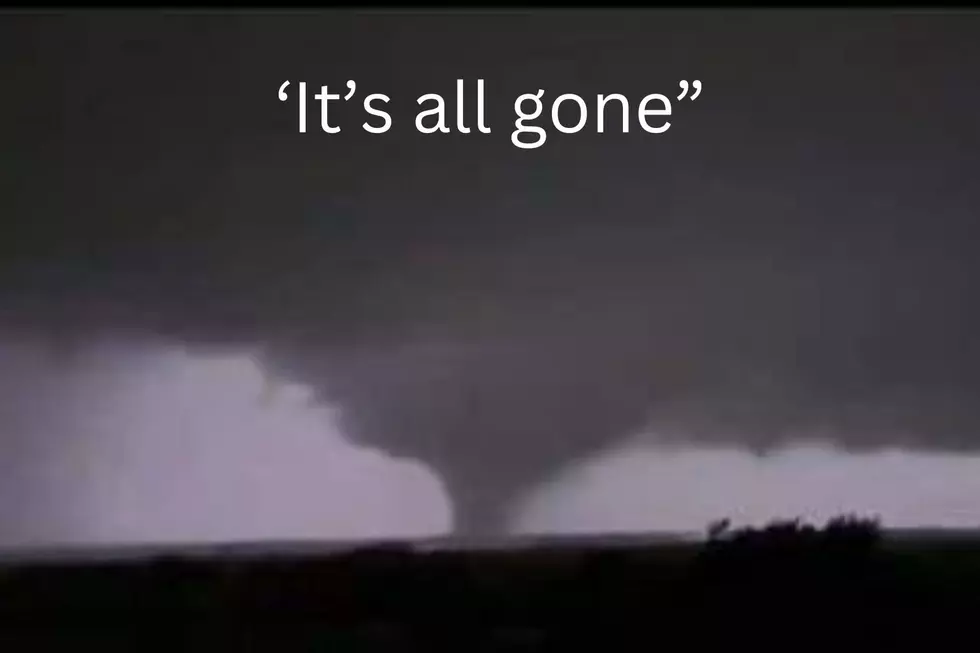
Danger Lurking: The Threats Of Aging Dams In Oklahoma
It's no secret that a lot of the infrastructure in Oklahoma is aging. And when that old infrastructure gives out, it can become harmful to Oklahoma residents. Some of Oklahoma's old infrastructure that could cause catastrophe if they were to break are a majority of the state's dams.
Oklahoma is one of the top 30 states with aging dams that pose great threats.
According to Stacker, based on information from the U.S. Army Corps of Engineers' National Inventory of Dams, Oklahoma is number 29 out of the 50 states for aging dams that pose a threat to residents. Oklahoma has a total of 449 high-hazard dams.
Major examples of immediate threat include the dams at Lake Ellsworth, Robert S. Kerr Reservoir, Hominy Lake and Waxhoma Lake. And dams that are major examples of poor condition include Chimney Rock Pump Storage, Lake Carl Blackwell, Okmulgee Lake and Shell Creek Lake Dam.
KEEP SCROLLING for the Oklahoma Counties Where Aging Dams Pose the Greatest Threat
What would cause aging dams to burst?
There are several factors that would cause any dam, especially an aging dam fail. According the Association of State Dam Safety Officials, causes of dam failure could happen for one of five reasons:
- Overtopping (water spilling over the top of a dam)
- Foundation Defects
- Cracking
- Inadequate Maintenance and Upkeep
- Piping (when seeping through a dam is not properly filtered)
According to data from the ASDSO Dam Incident Database, the primary incident for dam failure in the United States from 2010-2019 was overtopping, and the top incident driver for dam failure during the same time period was due to hydrologic and flooding.
Has a dam ever burst in Oklahoma?
One of the most historic dam breaks in Oklahoma history was in 1923 when in Oklahoma City the City Reservoir, now Lake Overholser, bursts due to heavy rains the state received that year. The break flooded Oklahoma City, along with neighboring towns Spencer and Jones, and caused five deaths and $3,500,000 in damages, according to an article from The Oklahoman.
When adjusted for inflation, the damage caused by the failure of the Lake Overholser dam in 1923 would cost $63,188,554.91 in 2024. Which shows that if a similar dam failure happened today, the cost of damages will cost Oklahoma communities millions, if not billions, of dollars.
Although the article states that if Lake Overholser had a similar burst today, there would still be flooding but not as much damage compared to 1923, but an article from USA Today stated that Lake Overholser would cause a "devastating flood that would follow if it failed."
According to the article from USA Today, Lake Overholser is one of 3,000 aging dams that have been identified being in areas of more frequent storms and is in poor or unsatisfactory conditions "and would probably kill people or destroy property" if failure occured.
Should Oklahomans be worried about flooding?
As climate change has progressed, Oklahoma has experienced more and more rain. According to a 2016 report from the United States Environmental Protection Agency, "in the coming decades, Oklahoma will become warmer, and both floods and droughts may be more severe."
It continues by stating that Oklahoma "soils have become drier, annual rainfall has increased, and more rain arrives in heavy downpours." Summer droughts are expected to become more severe with intensifying floods.
During the last 50 years, the amount of rain falling during the wettest four days of the year has increased about 15 percent in the Great Plains. Over the next several decades, the amount of rainfall during the wettest days of the year is likely to continue to increase, which would increase flooding.
What is being done for dam safety in Oklahoma?
According to the Oklahoma Water Resources Board website, the board "ensures the safety of more than 4,700 jurisdictional size dams in the state, providing design standards and technical assistance for dam construction, repair, and maintenance." The board provides a category for each dam it oversees in the state and what is done to maintain that dam within that category.
- High Hazard Potential (Red)
- Failure risk includes probable loss of human life.
- Inspections are required annually by registered professional engineer.
- Significant Hazard Potential (Orange)
- Failure risk includes economic loss or disruption of lifeline facilities.
- Inspections are required every three years by a registered professional engineer.
- Low Hazard Potential (Green)
- Failure risk includes low economic loss.
- Inspections are required every five years.
An interactive map of Oklahoma's dams overseen by the Oklahoma Water Resource Board and their categories can be found on the board's official website.
Risky Reservoirs: Oklahoma Counties Where Aging Dams Pose the Greatest Threat
Gallery Credit: Stacker
TWISTERS: Counties With the Most Tornadoes in Oklahoma
Gallery Credit: Stacker




